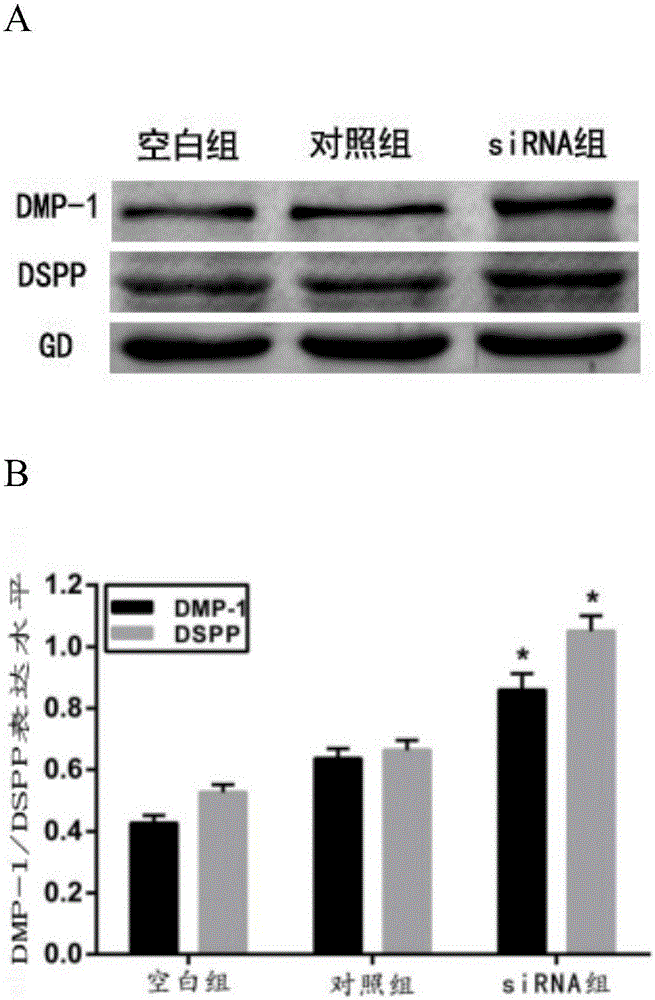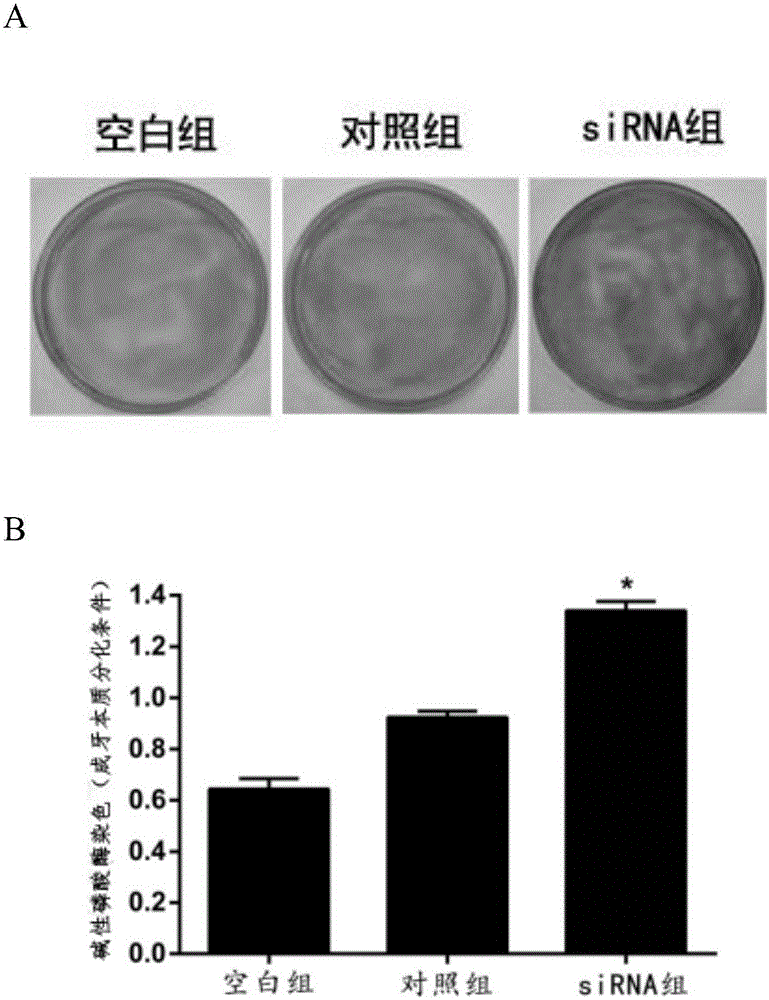Small interfering RNA of people-targeted IRAK1 gene and application of RNA
A small interference, gene technology, applied in DNA/RNA fragments, applications, gene therapy and other directions, can solve the problems of irritable pulp tissue, poor prognosis, easy damage to healthy tooth tissue, etc., and promote odontoblast differentiation. , the effect of reducing expression and inhibiting the development of inflammation
- Summary
- Abstract
- Description
- Claims
- Application Information
AI Technical Summary
Problems solved by technology
Method used
Image
Examples
Embodiment 1
[0023] Example 1: Acquisition of specific interfering sequences targeting human IRAK1 gene
[0024] The siRNA sequence was designed according to the human IRAK1 gene sequence (Genbank: NM_001025243) published by NCBI. For the specific design, refer to the RNAi online design software provided by the website of Invitrogen Corporation in the United States (its website http: / / rnaidesigner.invitrogen.com / rnaiexpress / sort.do), The target gene sequence containing 19 bases was obtained through comparison and screening: 5'-CCGAAGAAAGTGATGAATT-3' (SEQ ID NO: 1), and the corresponding siRNA interference sequence was synthesized by Shanghai Jikai Gene Chemical Technology Co., Ltd. The details are as follows:
[0025] Sense strand: 5'-GCCCGAAGAAAGUGAUGAAUU-3' (SEQ ID NO: 2)
[0026] Antisense Strand: 5'-AAUUCAUCACUUUCUUCGGGC-3' (SEQ ID NO:3)
Embodiment 2
[0027] Example 2: Dental pulp stem cell culture and Western blot detection of the effect of siRNA on IRAK1 protein expression
[0028] 1) The dental pulp cells in the experiment are derived from clinically normal and carious third molars and second premolars that need to be extracted for orthodontic treatment. The patients are 15-25 years old and their general condition is good. Informed consent was obtained from the participants and approved by the Medical Ethics Committee of the Affiliated Hospital of Nantong University. Immediately put the extracted teeth into ice-packed basal DMEM medium (containing 100 U / mL penicillin / 100 μg / mL streptomycin). After rinsing the tooth surface with iodophor on the ultra-clean bench, rinse the tooth surface with sterile saline until there is no blood stain, use the sterilized rongeur to open the pulp cavity along the cementoenamel boundary, take out the pulp, and cut it off. The pulp tissue of the root. Digest with 3 mg / mL type I collagenas...
Embodiment 3
[0032] Example 3: Western blot detection of the effect of siRNA on the odontoblast differentiation ability of dental pulp stem cells (DPSS, DMP-1 protein expression)
[0033] 1) The dental pulp stem cells in logarithmic growth phase were digested with 0.25% trypsin to make a single cell suspension (cell number 1×10 5 ), seeded in 6-well plates, 200uL per well. 37℃, 5%CO 2 After culturing in the incubator for 24h, discard the supernatant, add 400uL of serum medium to each well, and transfect for 4h (the experiment was divided into blank group, control group, and siRNA group as described above).
[0034] 2) 24h after dental pulp stem cells were transfected, the medium was aspirated, the cells were washed 1-2 times with PBS, 100uLRIPA lysis solution was added to the cells, the cells were collected into a 1.5mL tube, left standing on ice for 30min, centrifuged at 12000rpm / min, Take the supernatant for 30 min and prepare a protein sample for analysis. The prepared protein was ad...
PUM
 Login to View More
Login to View More Abstract
Description
Claims
Application Information
 Login to View More
Login to View More - R&D
- Intellectual Property
- Life Sciences
- Materials
- Tech Scout
- Unparalleled Data Quality
- Higher Quality Content
- 60% Fewer Hallucinations
Browse by: Latest US Patents, China's latest patents, Technical Efficacy Thesaurus, Application Domain, Technology Topic, Popular Technical Reports.
© 2025 PatSnap. All rights reserved.Legal|Privacy policy|Modern Slavery Act Transparency Statement|Sitemap|About US| Contact US: help@patsnap.com



